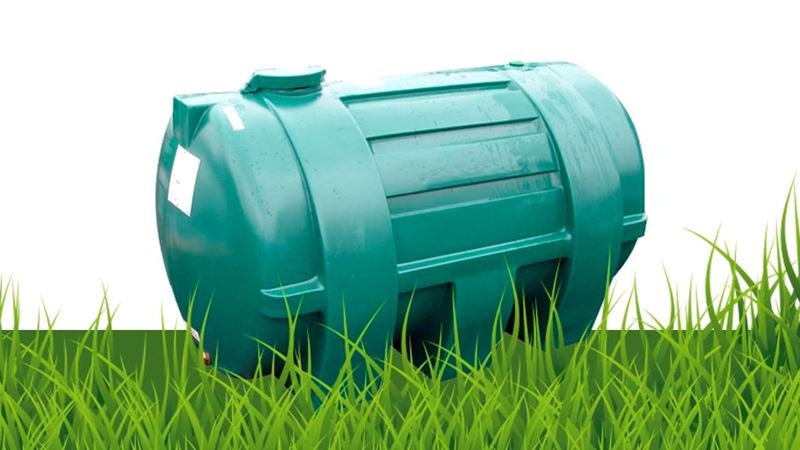Looking after your oil tank

YOU CAN FOLLOW OUR LIST OF TIPS AND ADVICE TO KEEP YOUR HOME HEATING OIL SAFE AND TO SAVE YOU MONEY IN THE LONG RUN.
Check your tank:
There are some simple checks and safety measures you can take to ensure your tank is in a good condition:
- Check for signs of damage, such as bulges, deep scratches, cracks, discolouration, rust or major dents.
- Look for any oil that has leaked out of the tank, particularly around pipes, valves and seams.
- Make sure that any external protection isn't filled with large amounts of water, oil, rubbish or plants.
- Make sure that the space around the plant is clear and accessible, and don't allow plants to grow near it.
- Make sure vents, gauges and access points are closed and protected so that rainwater, insects or dirt do not get into them.
- Check that gauges and alarms are fully working, and in particular the batteries. Consult the manufacturer for advice on how to do this.
- Keep an oil spill kit with drain blockers, leak-sealing putty and absorbent materials in the house in case of emergency.
- Make sure your tank is only filled to around 80-90% of its capacity to avoid overfilling and ensure your tank has an overfill protection device or alarm.
- To avoid your oil freezing or waxing you could consider building a heated enclosure around your tank – this step will also reduce the risk of water entering the tank.
- Make sure your tank has a filter bowl fitted and it keep it clean to stop it from becoming clogged or blocked.
- Have your oil filter changed each year when your furnace is professionally serviced.
- Be alert to any oil smells near the tank and inspect the underside of above ground tanks for oil spots or drips
Dealing with leaks:
Oil is toxic and harmful to the environment, including animals, plants and water sources. It is against the law to cause pollution, so any defects found should be fixed immediately by a professional. In the case of oil escaping from the tank, you should call the Environment Agency's 24-hour incident hotline on 0800 807 060.
What to do:
- Stop the flow of oil as close to where it’s leaking from as possible.
- If pipework or an appliance is leaking, close the main tank valve to stop the flow of oil from the tank.
- If the tank is plastic and has split, carefully rub a bar of soap into the crack to stem the flow of oil.
- Put a container under the leak to collect the spill, for example a bucket or rubbish bin.
- Use either sand, earth or a commercial oil spill kit to contain the oil and stop it entering drains or watercourses.
- Don’t use detergents or a hose to wash spilt oil away; this makes the pollution worse. You’re likely to spread the contamination and increase the scale and cost of clean-up.
- Notify your insurance company that you’ve had a spill.
- If you need an emergency clean-up response, contact an accredited spill clean-up company.
- If oil has soaked into the ground, you must arrange for a professional clean-up company to remove all contaminated soil to prevent long term problems on your land or any neighbouring land.
- Contact your tank installer/engineer urgently if your tank or equipment needs to be repaired. Don’t try to repair them yourself.
It can cost thousands to clean up an oil spill, so it's advisable to get insurance that:
- has a high enough liability limit to cover the cost of cleaning up your property or neighbouring land
- covers the cost of replacing lost, leaked or stolen oil
- covers environmental clean-up for accidental loss.
- be aware that not all insurance policies cover oil leakage.
Sludge and water:
Sludge or water in your heating oil tank can clog pipework, damage or corrode heating systems and reduce the efficiency of the oil.
Water can come from rainfall when taking delivery of new oil or due to condensation. You should take precautions to ensure any damage is fixed and openings are closed, and your delivery driver should do the same when filling your tank.
Sludge tends to build up in tanks where oil has been stored for a long period.
To detect either water or sludge, look for signs of a darkened area at the bottom of the tank, which may have been caused by erosion. You can also buy water-finding paste which you would need to attach to a long stick to put into the tank. The colour the paste turns will indicate whether water is present.
A technician can remove water and sludge and or/clean your tank, and can find the cause of any problems you've experienced and fix them.
Protect your tank:
Due to the cost of heating oil, it can be attractive to thieves. Adding locks or lockable valves if possible will prevent theft, and in some cases is a legal requirement. Your engineer or supplier can advise you on this.
It's also wise to shield your tank from the road so it isn't visible, although in doing this you must ensure access to it isn't restricted and it complies with guidelines. Ask an Oftec-registered technician for details.
You could also install motion-sensitive security lighting to alert you if there is a problem, or an alarm (costing around £80) that will react if the oil level drops suddenly - which is also useful for notifying you of an oil leak.
